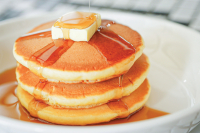The golden season
It’s starting to become the goldenrod time of the year. Goldenrods — like asters, thistles, cosmos, zinnias, daisies, coneflowers, dahlias, sunflowers, ragworts, hawkweeds, etc. — belong to the vast “Asteraceae” family that numbers almost 20,000 species worldwide, with over 300 native and introduced species of the family here in the Southern Appalachians. In this family, the flower-like heads often consist of a conglomerate of tiny central flowers that form a disk.
There are 100 or so goldenrod species native to the United States. According to Eugene Wofford’s Guide to the Vascular Plants of the Blue Ridge (1989), there are 31 species in the mountains of southwest Virginia, east Tennessee, North and South Carolina, and north Georgia. Here in the southwestern corner of North Carolina there are about 25 species, with about ten of these being common.
Goldenrods, of course, get their common name from the profusion of tiny yellow flowers comprised of tubular disc florets and outer flat petal-like structures called rays. These offer any passing insect a readily available nectar source. Watch a stand of goldenrod for a few minutes and you’ll observe a variety of pollinators — honey bees, bumblebees, beetles, flies, lightning bugs, and so on — scrambling from flower to flower as if they were in a cafeteria line. It’s that easy.
Like asters and jewelweed, goldenrods are opportunistic. A single species is capable of exploiting diverse habitats. When in open situations, they tend to be showy since a higher percentage of energy is put into seed producing materials. This “make hay while the sun shines” policy is reversed when the same species locates itself in a woodland circumstance and devotes more energy to underground energy storage systems.
Goldenrods are placed in the genus “Solidago,” which means “to make whole” or “to heal,” a reference to the supposed (and probably real) healing power of the plant. Indian medicine men throughout North America often favored goldenrod when brewing herbal remedies used in sweat house ceremonies to drive out evil spirits.
The Cherokees favored sweet goldenrod (S. odora), a species that exudes an anise-scented fragrance when bruised. They made a tea from the leaves for fevers and colds, measles, female obstructions, bloody bowel discharges, and neuralgia. The root was chewed to ease a sore mouth.
On the other hand, early white settlers in America simply utilized the plant to make a pleasant tasting tea. After dumping the English tea into Boston Harbor, colonists satisfied their craving for a tea of any sort by concocting a “liberty tea” from dried goldenrod leaves that proved so satisfactory it was even exported to China.
Because goldenrod is common and often seems “weedy,” few wildflower gardeners here in the United States deliberately cultivate the plant. But the English, who have a keen horticultural eye, enthusiastically adopted certain species — Canada goldenrod (S. Canadensis) especially — and made the dependable and easily-tended gleaming yellow wands an important part of their fall gardens.
The most frequently heard complaint against goldenrod is that made by those supposedly suffering from hay fever supposedly engendered by the plant. This is a bad rap. As noted, the plant is pollinated by insects — its pollen is too heavy to be very much airborne except in a hurricane. The real culprits are wind-pollinated species like ragweed that bloom at the same time and release irritating pollen particles into the slightest breeze.
Have you ever been walking a mountain trail and encountered a musky smell that reminded you of skunk, mold, or scat? Whenever this happens, I consider six possible sources, five of which would be: skunk, bear scat, wild boar rooting, carrion vine (Smilax herbacea), or galax (Galax urceolata). But, if you’re walking in the higher elevations, say at Waterrock Knob, the smell will often be emanating from a nearby stand of skunk goldenrod (S. glomerata).
This curious species is found only in the higher elevations of thirteen mountain counties in Tennessee and North Carolina and no place else in the world. The smell can’t be detected from crushed foliage or flowers. It simply forms a “cloud” of sorts around the plant. It’s probable that the plant’s decaying foliage is emitting decomposed sulfur compounds similar to those exuded by skunks. Why? No one is sure.
George Ellison wrote the biographical introductions for the reissues of two Appalachian classics: Horace Kephart’s Our Southern Highlanders and James Mooney’s History, Myths, and Sacred Formulas of the Cherokees. In June 2005, a selection of his Back Then columns was published by The History Press in Charleston as Mountain Passages: Natural and Cultural History of Western North Carolina and the Great Smoky Mountains. Readers can contact him at P.O. Box 1262, Bryson City, N.C., 28713, or at This email address is being protected from spambots. You need JavaScript enabled to view it..





